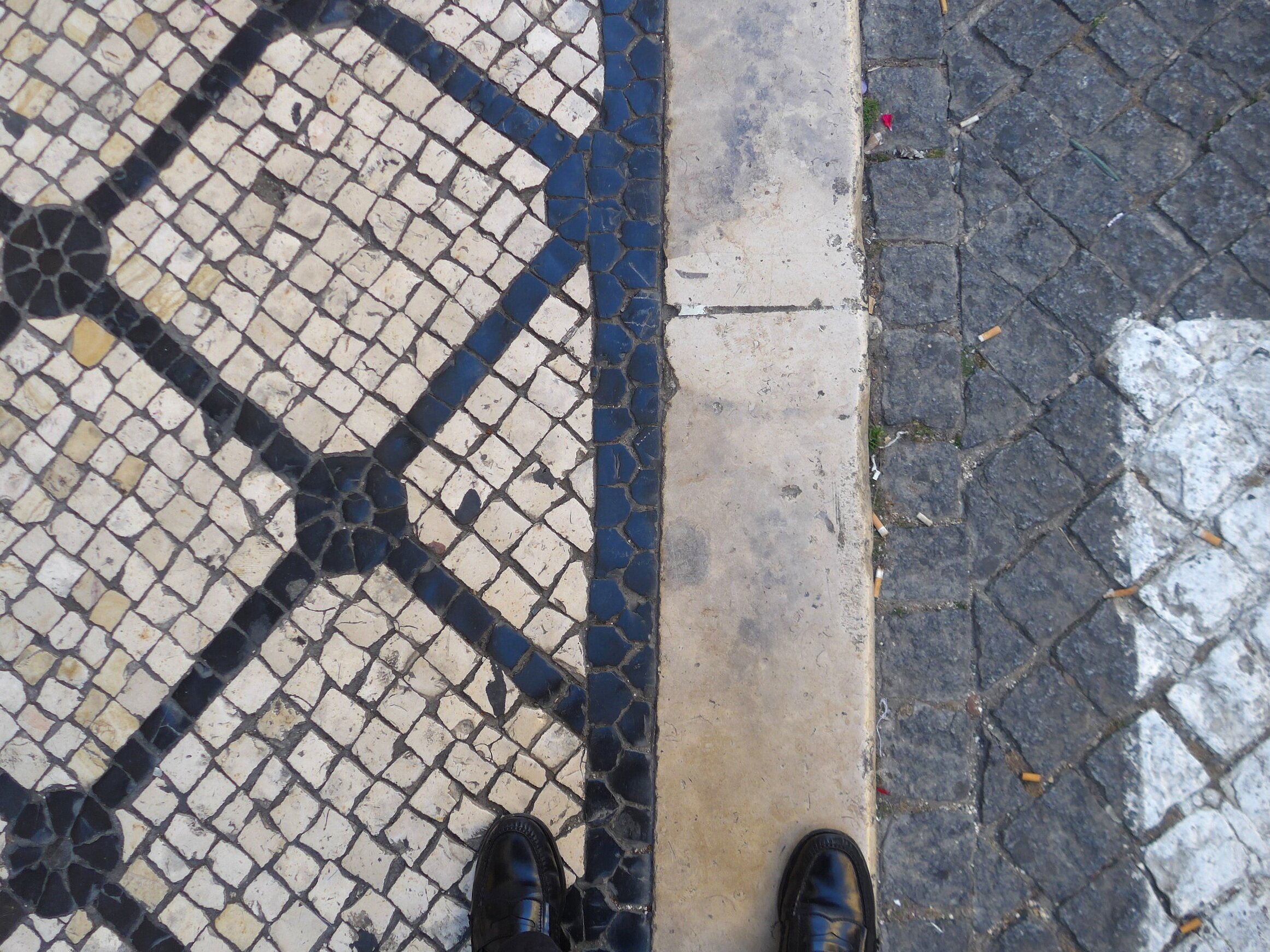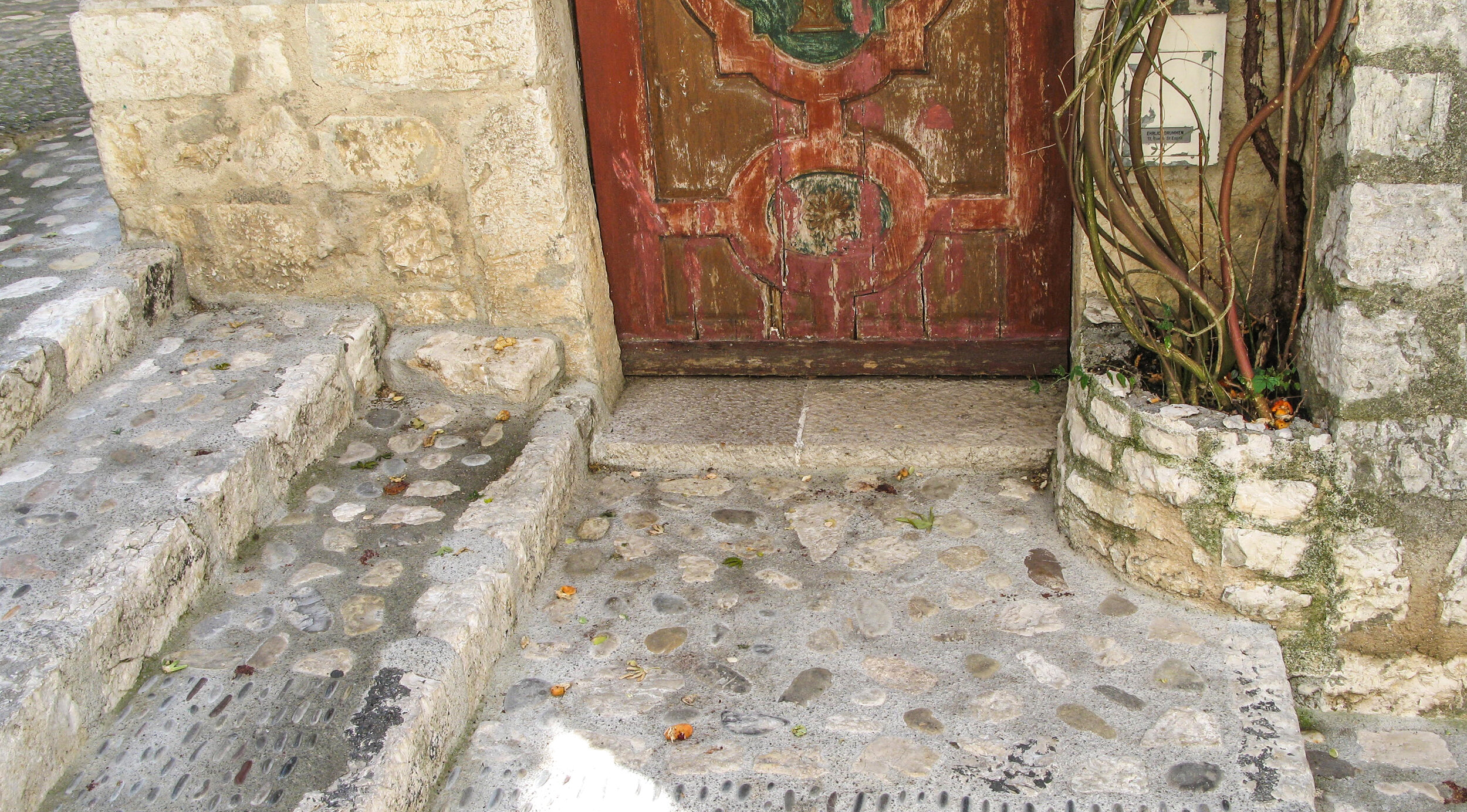The Floor Pattern at 6.00am
Travel the world with wonder and delight and observe the visual novelties encountered!
I truly enjoy traveling and visiting towns, villages, and cities of all sizes. Throughout my journeys I have delighted in noticing how each destination has its own unique floor patterns that speak to history and culture. Here are some of my favorite examples from past excursions.
Lisbon : A few years ago, I purposely extended my stop-over in Lisbon to experience the historic city. My flight landed at 5.00 am local time and I took a short taxi-ride to a spot that a friend of mine described as featuring breathtaking views that overlook the entire old city. However, by 6:00 am I had no such experience. There was no moon or stars to shed any light, just a black hole with the faint sound of the Atlantic Ocean beyond. I meandered through the narrow city streets with only dimly lit streetlights providing some semblance of guidance. I was struck by the diversity of the floor patterns that were revealing themselves to me as the city slowly shed its darkness. Cobble stones of various sizes, dimensions, and luminosity were arranged in a multitude of patterns, with layers of intertwined geometries — some old, some clearly contemporary, all leaning towards past typologies.
Saint Paul+Antibes: I encountered a similar diversity in floor patterns in Saint Paul de Vence (a small, hill-town) and Antibes (an old fishing village), both in southern France. Here, the cut stone or found pebbles vary in shape and sizes. In some areas they are arranged in random patterns. In others, they seem more resolutely designed and organized.
San Juan, Puerto Rico: In Old San Juan, Puerto Rico, bright blue cobble stones cover the streets. The bricks were made of furnace slag, a by-product of the iron industry, and brought over by Spanish ships as ballast — unloaded to make room for the riches destined for the old continent. Today they lend a unique blue hue to the colorful old city.
Ogunquit, Maine: Floor patterns are as diverse and varied as the infinite situations where we find them, rarely repeated. Some are designed to seamlessly blend with the surrounding cliffs, as in Ogunquit, Maine. The stone must have been quarried directly from the ocean cliffs, then carved and laid out for the ocean-facing sitting area.
Colorado Springs: The Air Force Academy in Colorado, Springs exploits a different design strategy. Here the layout of the SOM designed campus is based on a rigid grid, contrasting with the jagged Rocky Mountains beyond. The grid relentlessly repeats in plan, section, and elevation. It is so imposing that the academy’s life adopted its rigorousness, going so far as to require all freshman to march on the white stone stripes only — no deviation is ever allowed.
Berlin: In Berlin, a continuous yet changing floor pattern subtly reminds visitors and inhabitants alike of where the wall once stood. Peter Eisenman’s Holocaust Museum uses a similar yet relentless floor pattern and alternates size and scale to a disconcerting degree to memorialize the victims of the holocaust.
New Milford CT+Santiago: Floor patterns can tell multiple types of stories, whether reminding of past occurrences, as in Santiago, Chili where the map displays the city’s history, or by sending a social or political message as in this painted crosswalk in New Milford, CT.
Summary: When traveling the world or just visiting a nearby park, look down to enjoy the visual diversity the surroundings offer! Check out the floor patterns, they are everywhere, and next time you design floor finishes, think about the infinite possibilities, limited only by your boundless imagination.
All Photos Courtesy of Michel Franck
















